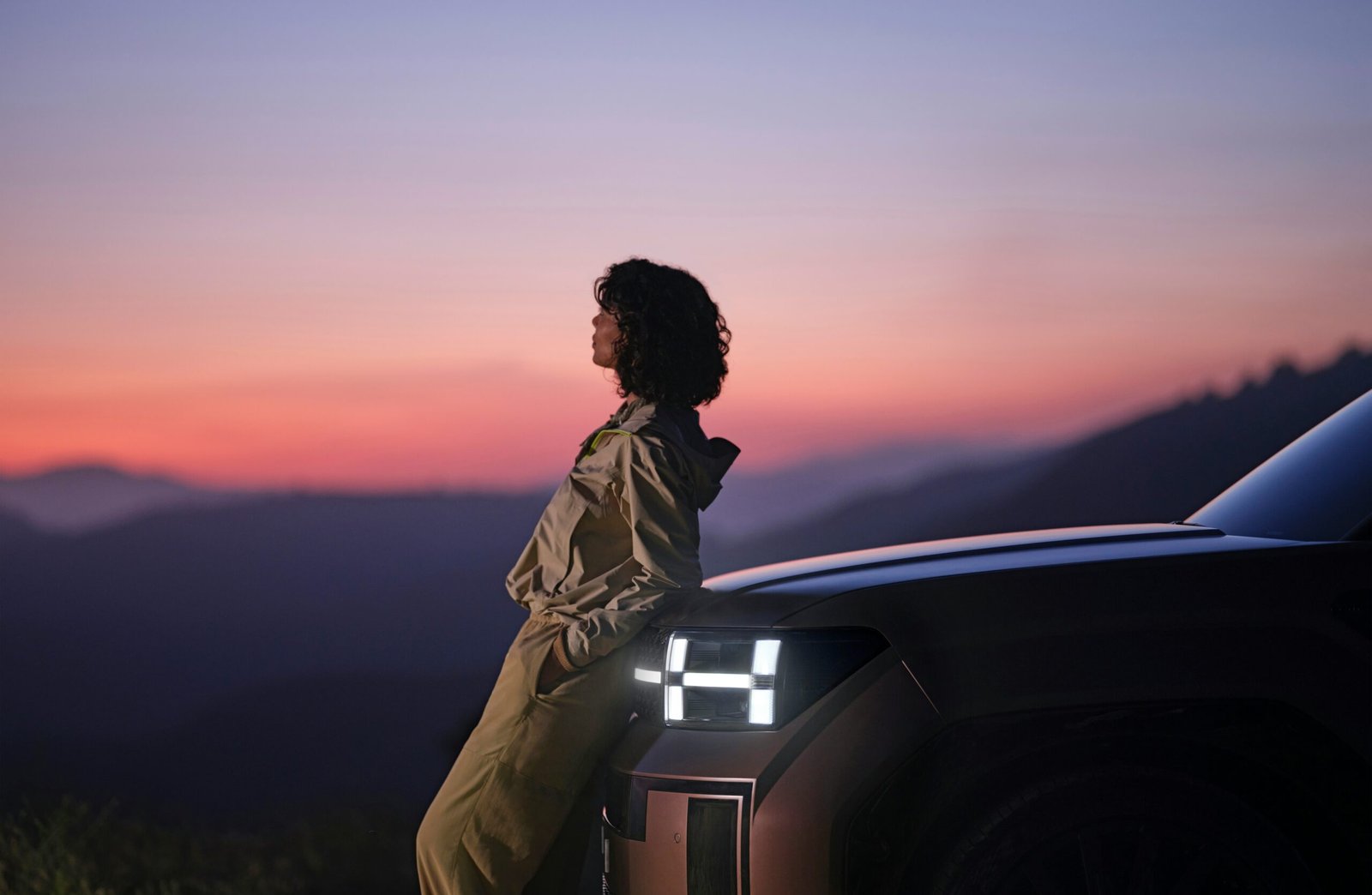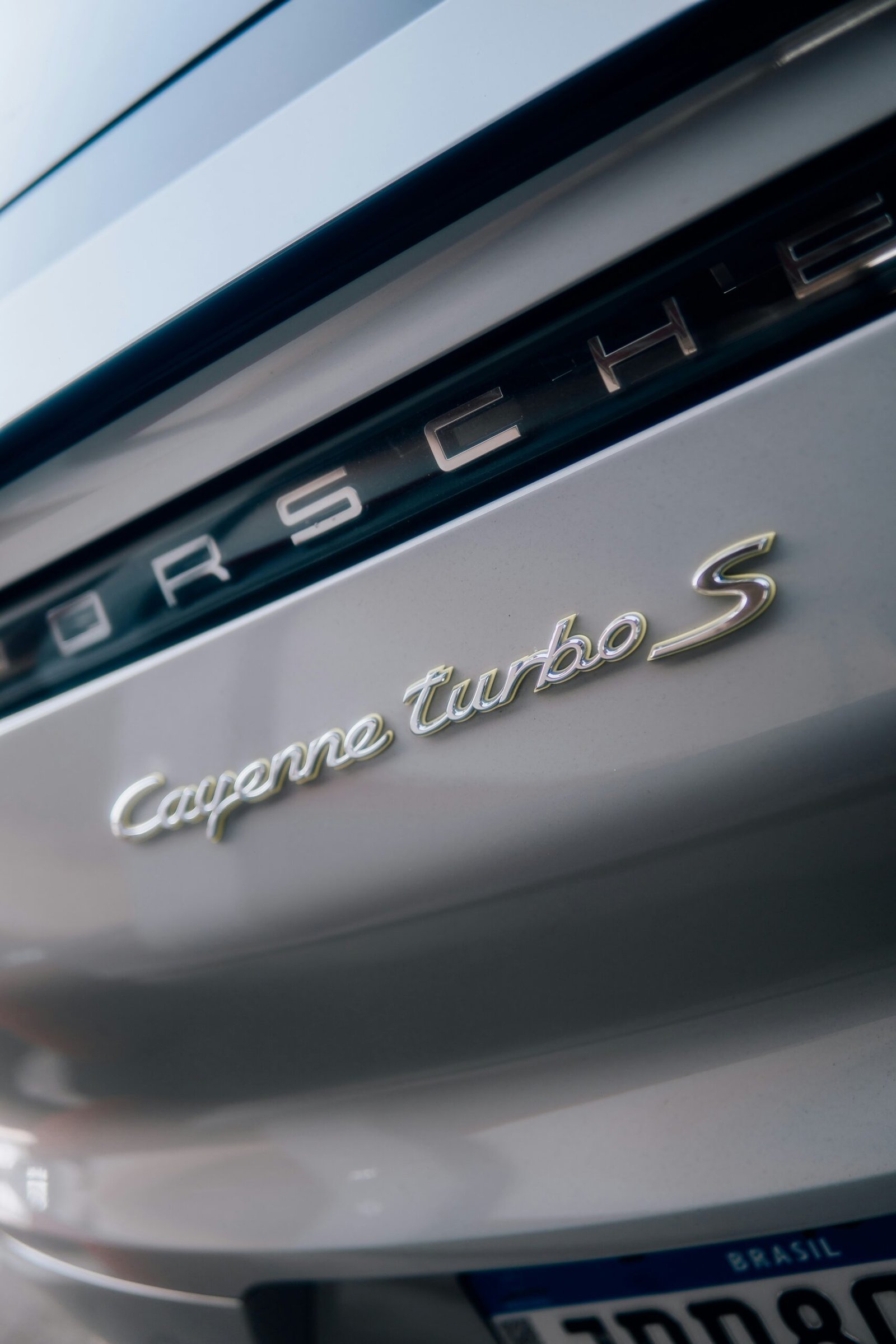The Tata Nexon EV, launched in January 2020, stands as a pioneering force in the Indian electric vehicle market. As Tata Motors’ flagship electric SUV, it embodies the company’s dedication to sustainable and innovative mobility solutions. The Nexon EV’s introduction marks a significant milestone, not only for Tata Motors but for the Indian automotive industry as a whole, which has been gradually transitioning towards greener alternatives.
Key features of the Tata Nexon EV include a state-of-the-art Ziptron technology, which ensures efficient and high-performance electric mobility. The vehicle is powered by a 30.2 kWh lithium-ion battery, offering an impressive range of up to 312 kilometers on a single charge. The Nexon EV also boasts fast-charging capabilities, allowing 0-80% battery charge in just about 60 minutes, making it a practical choice for daily commutes and long drives alike.
In addition to its advanced powertrain, the Nexon EV is equipped with a host of modern amenities and safety features. These include a touchscreen infotainment system with smartphone connectivity, automatic climate control, regenerative braking, and dual airbags, ensuring a comfortable and secure driving experience.
Tata Motors, a stalwart in the Indian automobile sector, has long been recognized for its commitment to innovation and quality. With the introduction of the Nexon EV, Tata Motors has reinforced its commitment to electric mobility, aligning with global trends towards reducing carbon emissions and fostering sustainable transport solutions. The company’s investment in electric vehicle technology and infrastructure highlights its resolve to lead the electric revolution in India.
The Nexon EV’s success in the market has been a testament to Tata Motors’ vision and engineering prowess. With a growing network of charging stations and a supportive government policy framework, the Nexon EV is well-positioned to accelerate the adoption of electric vehicles in India, paving the way for a cleaner and more sustainable future.
Understanding Bharat NCAP
The Bharat New Car Assessment Program (Bharat NCAP) serves as India’s premier vehicle safety rating system, aimed at improving car safety standards across the nation. Modeled after similar global NCAP initiatives, Bharat NCAP evaluates the safety performance of vehicles through stringent crash tests and safety assessments. This program is integral to enhancing consumer awareness and confidence, ensuring that the vehicles on Indian roads meet high safety benchmarks.
Bharat NCAP’s testing procedures are both comprehensive and rigorous. Vehicles undergo frontal offset crash tests, side impact tests, and pedestrian protection evaluations. These tests simulate real-world accident scenarios to assess the structural integrity of the vehicle and the effectiveness of its safety features, such as airbags and seatbelts. Additionally, Bharat NCAP evaluates electronic stability control systems and other advanced driver-assistance systems (ADAS) to provide a holistic safety rating.
The criteria for Bharat NCAP ratings are meticulously designed to reflect the vehicle’s ability to protect occupants in various crash situations. Ratings range from one to five stars, with higher ratings indicating superior safety performance. A vehicle’s structural integrity, the protection it offers to adult and child occupants, and its ability to mitigate injuries to pedestrians are key factors considered in these ratings.
Comparatively, Bharat NCAP aligns closely with other global NCAP programs such as Euro NCAP, Latin NCAP, and ASEAN NCAP. However, it is tailored to address specific conditions and challenges unique to Indian roads and driving patterns. This localized approach ensures that the safety ratings are relevant and practical for Indian consumers.
The importance of Bharat NCAP ratings cannot be overstated. For consumers, these ratings provide a clear and reliable measure of a vehicle’s safety, aiding in informed decision-making. For manufacturers, achieving a high Bharat NCAP rating is a testament to their commitment to safety and can significantly enhance their market reputation. Ultimately, Bharat NCAP plays a crucial role in promoting safer vehicles and reducing road fatalities in India.
The 5-Star Safety Achievement
The Tata Nexon EV’s achievement of a 5-star safety rating in India’s Bharat NCAP crash test marks a significant milestone in the automotive industry, particularly for electric vehicles (EVs). This prestigious rating underscores the vehicle’s robust design, superior passenger protection, and exceptional crashworthiness. The Bharat NCAP, or New Car Assessment Program, is a stringent vehicle safety evaluation system, where a 5-star rating represents the highest standard of safety performance.
The 5-star safety rating of the Tata Nexon EV is a testament to its advanced engineering and commitment to passenger safety. This rating is indicative of the vehicle’s ability to provide maximum protection to occupants in the event of a collision. The Tata Nexon EV incorporates high-strength materials and state-of-the-art safety features, such as reinforced body structures, multiple airbags, and advanced driver assistance systems. These elements collectively enhance the crashworthiness of the vehicle, ensuring minimal risk of injury to passengers.
When compared to other vehicles in the same segment, the Tata Nexon EV stands out for its unparalleled safety credentials. Many vehicles in the compact SUV category, both electric and traditional internal combustion engine (ICE) models, often fall short of achieving such high safety standards. The Nexon EV’s 5-star rating sets a new benchmark, particularly for EVs, which are already perceived as the future of sustainable transportation. This achievement not only elevates the Nexon EV above its competitors but also reinforces Tata Motors’ reputation for prioritizing safety and innovation.
What sets the Tata Nexon EV apart from others in its segment is its holistic approach to safety. Unlike some vehicles that focus solely on either passive or active safety features, the Nexon EV integrates both seamlessly. The passive safety features, such as the robust chassis and strategically placed crumple zones, work in tandem with active safety systems like electronic stability control and anti-lock braking systems. This comprehensive safety package ensures that the Nexon EV provides the highest level of protection in various driving scenarios.
In conclusion, the Tata Nexon EV’s 5-star safety rating is not just an accolade but a reflection of its superior design and engineering. It sets a new standard in vehicle safety, particularly within the rapidly evolving electric vehicle market, and offers consumers a reliable and secure driving experience.
Crash Test Details
The Tata Nexon EV recently made headlines by becoming the first electric vehicle in India to achieve a 5-star safety rating in the Bharat NCAP crash tests. The vehicle underwent a series of rigorous assessments designed to evaluate its performance in various collision scenarios. These tests included frontal, side, and rear-end collisions, each conducted under stringent conditions to ensure comprehensive safety evaluation.
In the frontal collision test, the Tata Nexon EV was subjected to a head-on impact at a speed of 64 km/h, simulating a real-world crash scenario where two vehicles collide. This test evaluated the structural integrity of the vehicle’s front end and the effectiveness of its restraint systems, such as airbags and seatbelts. The results were impressive, with the Nexon EV demonstrating excellent crashworthiness, thereby minimizing potential injuries to the occupants.
The side collision test involved a mobile deformable barrier striking the side of the vehicle at 50 km/h. This test aimed to assess the vehicle’s ability to protect its occupants in the event of a side impact, which is often more challenging due to the limited crumple zones. The Tata Nexon EV excelled in this test as well, thanks to its robust side impact beams and strategically placed airbags, which significantly absorbed the impact energy and shielded the passengers.
Lastly, the rear-end collision test was conducted to evaluate the vehicle’s performance when struck from behind, a common type of accident on roads. The Nexon EV demonstrated exceptional rear structural integrity, largely due to its reinforced rear crumple zones designed to absorb and dissipate the crash energy efficiently.
Several safety features contributed to the Tata Nexon EV’s high rating in these crash tests. The vehicle is equipped with dual front airbags, ABS with EBD, and a reinforced passenger compartment. Additionally, the use of high-strength steel in the construction and advanced seatbelt pre-tensioners played pivotal roles in enhancing occupant safety.
Overall, the Tata Nexon EV’s performance in the Bharat NCAP crash tests underscores its status as a safe and reliable electric vehicle, setting a new benchmark for automotive safety in India.
Safety Features of Tata Nexon EV
The Tata Nexon EV has distinguished itself as a paragon of safety, thanks to its comprehensive suite of advanced safety features. The vehicle’s structural integrity is a cornerstone of its safety credentials. Designed with high-strength steel, the Nexon EV’s robust architecture ensures maximum protection to occupants by efficiently absorbing and dissipating impact energy during collisions. This structural fortitude is a significant contributor to its 5-star safety rating in the Bharat NCAP crash test.
Equally important in enhancing passenger safety are the multiple airbags strategically positioned throughout the cabin. The Tata Nexon EV comes equipped with dual front airbags, side airbags, and curtain airbags. These airbags provide an extensive cushioning effect, minimizing the risk of injury in the event of a collision from various angles.
Another critical feature is the Anti-lock Braking System (ABS) with Electronic Brake-force Distribution (EBD). ABS prevents the wheels from locking up during sudden braking, thereby maintaining steering control. EBD, on the other hand, optimally distributes the braking force among all wheels based on the load conditions, ensuring more efficient braking performance. These systems together significantly reduce the chances of skidding and improve overall braking stability.
The Nexon EV also boasts Electronic Stability Control (ESC), which is instrumental in maintaining vehicle stability. ESC continuously monitors the vehicle’s movement and automatically applies brakes to individual wheels if it detects any loss of control. This feature is particularly beneficial in preventing rollovers and skids, especially in challenging driving conditions.
In addition to these conventional safety systems, the Tata Nexon EV incorporates innovative technologies such as Hill Hold Control and Roll-over Mitigation. Hill Hold Control prevents the vehicle from rolling backwards on an incline, while Roll-over Mitigation actively reduces the likelihood of a rollover scenario by applying corrective measures.
Collectively, these advanced safety features underscore the Tata Nexon EV’s commitment to passenger safety, playing a pivotal role in its achievement of the prestigious 5-star safety rating. By integrating a range of both traditional and cutting-edge safety technologies, the Nexon EV sets a new benchmark in the electric vehicle segment in India.
Impact on the Indian EV Market
The Tata Nexon EV’s achievement of securing a 5-star safety rating in the Bharat NCAP crash test is a significant milestone for the Indian electric vehicle market. This accomplishment not only sets a new benchmark for safety in the EV segment but also has widespread implications for consumer perception and market dynamics.
Firstly, the high safety rating is likely to positively influence consumer trust and confidence in electric vehicles. Historically, one of the major apprehensions among potential EV buyers has been concerns over safety standards. With the Tata Nexon EV demonstrating exemplary safety performance, it can alleviate these concerns, making consumers more inclined to transition from conventional internal combustion engine vehicles to electric alternatives.
Furthermore, this achievement is expected to accelerate the adoption of electric vehicles in India. As safety becomes a non-negotiable factor for many car buyers, the Nexon EV’s 5-star rating can serve as a compelling reason for consumers to consider EVs as their next vehicle purchase. This could potentially lead to an uptick in EV sales, contributing to the broader goal of reducing carbon emissions and promoting sustainable transportation solutions in the country.
In addition to influencing consumer behavior, the Tata Nexon EV’s milestone can also act as a catalyst for other automobile manufacturers. The recognition of safety as a critical aspect of EV design can inspire other companies to prioritize and enhance safety features in their electric vehicle offerings. This collaborative push towards higher safety standards can result in a more competitive market, driving innovation and technological advancements across the industry.
Overall, the Tata Nexon EV’s 5-star safety rating is more than just a commendable achievement; it is a transformative event that has the potential to reshape the landscape of the Indian electric vehicle market. By fostering consumer trust, encouraging EV adoption, and prompting manufacturers to elevate safety standards, this milestone paves the way for a safer, greener future for transportation in India.
Future of Electric Vehicle Safety in India
The groundbreaking achievement of the Tata Nexon EV receiving a 5-star safety rating in India’s Bharat NCAP crash test signals a pivotal moment for the future of electric vehicle (EV) safety standards in the country. As the first electric vehicle to attain this accolade, the Nexon EV sets a new benchmark for both safety and innovation, compelling the entire automotive industry to recalibrate its approach toward safety in electric vehicles.
In the wake of this accomplishment, it is anticipated that safety regulations for EVs in India will become more stringent. Regulatory bodies are likely to implement stricter crash test protocols and mandates, ensuring that all new electric vehicles adhere to higher safety standards. This move not only aims to enhance passenger safety but also to build consumer confidence in the burgeoning EV market.
The advancement in EV technology will play a crucial role in meeting these elevated safety standards. Innovations such as advanced driver-assistance systems (ADAS), autonomous emergency braking (AEB), and enhanced battery safety features are expected to become more prevalent. These technological improvements will not only contribute to the overall safety of electric vehicles but also highlight the potential for EVs to incorporate cutting-edge safety mechanisms that surpass traditional internal combustion engine vehicles.
As Tata Motors leads the way, other automakers are expected to respond by elevating their safety standards to remain competitive in the market. This could spur a wave of innovation and investment in research and development across the industry, ultimately benefiting consumers with safer, more reliable electric vehicles. The competitive landscape will likely see an influx of EV models that prioritize safety, driving a collective improvement in vehicle safety standards across the board.
Overall, the Tata Nexon EV’s 5-star safety rating is more than just a milestone; it is a catalyst for change in the Indian automotive industry. This pioneering achievement sets the stage for a future where electric vehicle safety is paramount, encouraging continuous advancements and setting a precedent for excellence. The ripple effects of this development will undoubtedly shape the trajectory of EV safety standards in India, fostering a safer and more secure driving environment for all.
Conclusion
The Tata Nexon EV has set a remarkable precedent by becoming the first electric vehicle to receive a 5-star safety rating in India’s Bharat NCAP crash test. This achievement underscores Tata Motors’ commitment to both innovation and safety, marking a significant milestone not just for the company, but for the entire Indian automotive industry. The rigorous testing protocols of Bharat NCAP validate the Nexon EV’s robust safety features, ensuring superior protection for occupants in various crash scenarios.
The 5-star safety rating of the Tata Nexon EV is a testament to the advancements in automotive engineering and design, emphasizing the importance of consumer safety in the rapidly growing electric vehicle segment. This accomplishment is likely to inspire other automakers to prioritize safety alongside the development of eco-friendly technologies, driving a collective effort towards creating safer, more sustainable vehicles.
For Indian consumers, the Tata Nexon EV’s top-tier safety rating provides additional confidence in transitioning to electric mobility. It highlights that environmentally friendly vehicles do not compromise on safety, which is a critical consideration for many when purchasing a car. As India moves towards greater adoption of electric vehicles, the Nexon EV’s success serves as a benchmark for future models, encouraging broader acceptance and trust in electric mobility.
In essence, the Tata Nexon EV not only revolutionizes the electric vehicle market in India but also establishes new safety standards that benefit consumers and the industry alike. Its 5-star safety rating is a pivotal development that could accelerate the shift towards a safer, more sustainable automotive future in India.




